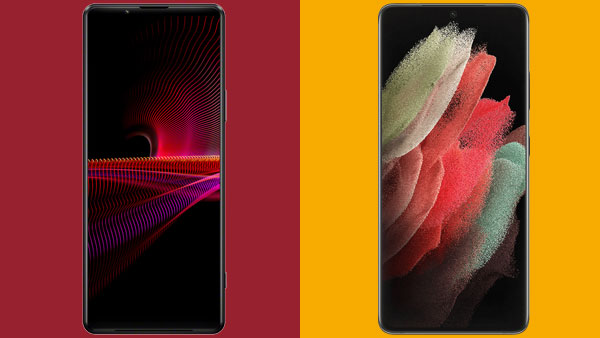
The Sony Xperia 1 III marks Sony’s latest effort to give us the ultimate enthusiast’s smartphone. But if there’s one device that stands in its way, it’s got to be the Samsung Galaxy S21 Ultra.
It’s a fascinating face-off. Both of these phones are big, powerful, and full to the brim of high-end components and attention-grabbing features. Both cost an awful lot of money, too.
And yet the points of contrast run far and deep. Neither of these phones is a case of design-by-committee, with both representing strong individual visions of what a top smartphone should be from manufacturers with varied interests.
So which superphone would we buy if we were slapping our own cash down on the counter?
Sony Xperia 1 III vs Samsung Galaxy S21 Ultra price and availability
The Sony Xperia 1 III is walking a rather circuitous path to market. Having been revealed on April 14, 2021, it’s not set to be released until August 19 in the US and UK markets. Its price is set at a mighty $1,299.99 / £1,199 (roughly AU$1,800) for 256GB of storage and 12GB of RAM.
There’s also a 512GB capacity model out there, but it seemingly won’t be coming to the US or the UK. While we’re on the subject, the lack of Australian pricing here reflects the fact that Sony doesn’t sell its phones in all key markets like Samsung does.
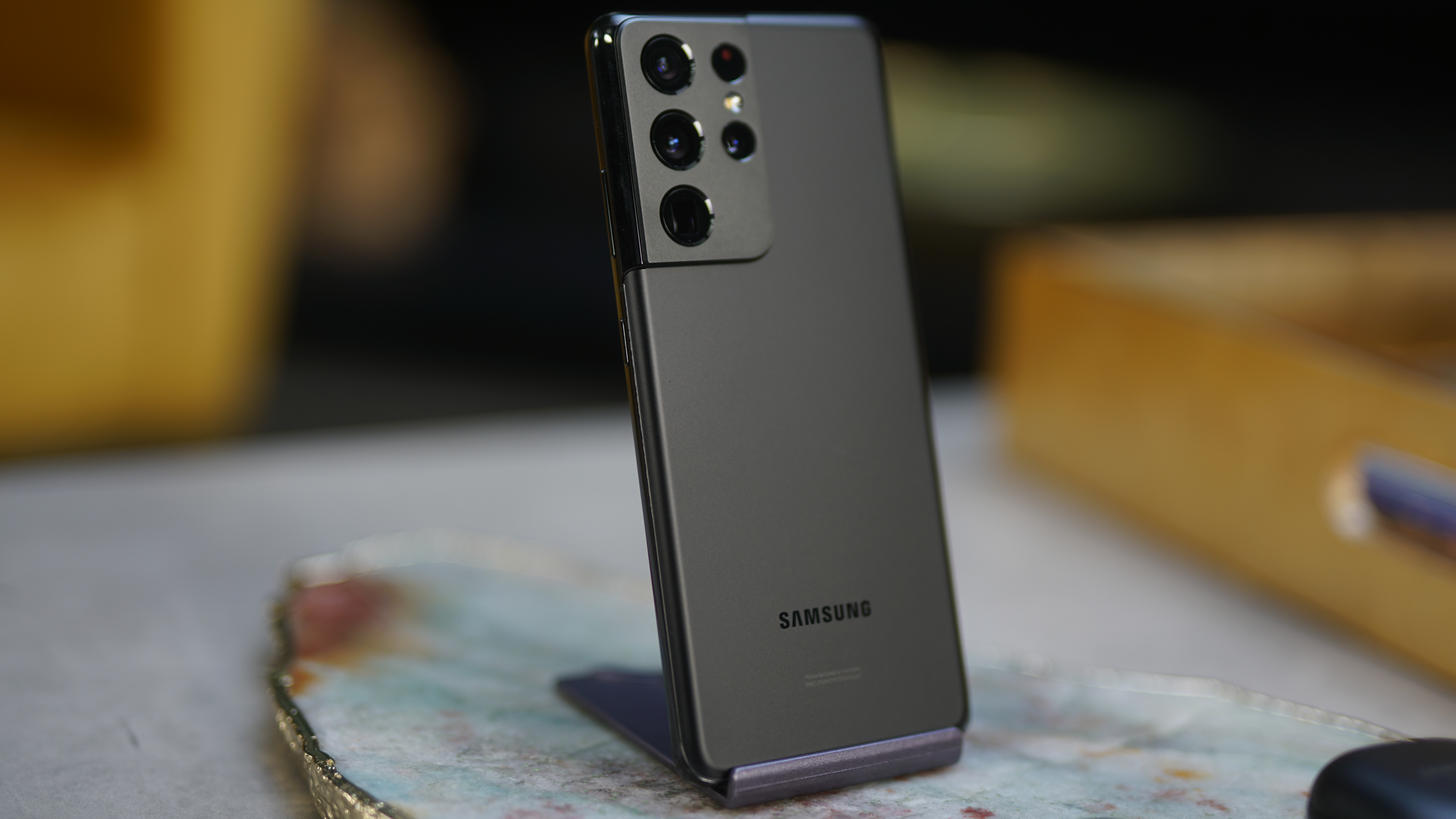
The Samsung Galaxy S21 Ultra pulled the opposite trick to its rival, landing earlier than expected on January 29, 2021 in all key markets. Prices for Samsung’s current flagship start at $1,199 / £1,149 / AU$1,849 for 128GB of storage, while the 256GB model costs $1,249.99 / £1,199 / AU$1,949.
Get daily insight, inspiration and deals in your inbox
Sign up for breaking news, reviews, opinion, top tech deals, and more.
The top 512GB model, which also comes with 16GB of RAM rather than 12GB, will set you back $1,329.99 / AU$2,149. Samsung doesn’t offer the latter top model in the US market.
If we’re considering the like-for-like 256GB / 12GB RAM model, then, these two phones are roughly the same (rather high) price.
Design
We love the way both of these phones look and feel, and we also love the fact that they’re almost completely different from one another.
Sony, in particular, has long resisted the prevailing winds of smartphone design. Not for Sony are the curved displays and invasive screen notches of the rest.
The Sony Xperia 1 III has a simple rectangular profile, flat edges, and a dead-flat display. And while that display’s pros and cons can be debated (and will be in the next section), there’s no denying that its notchless approach is preferable if you consume a lot of media.
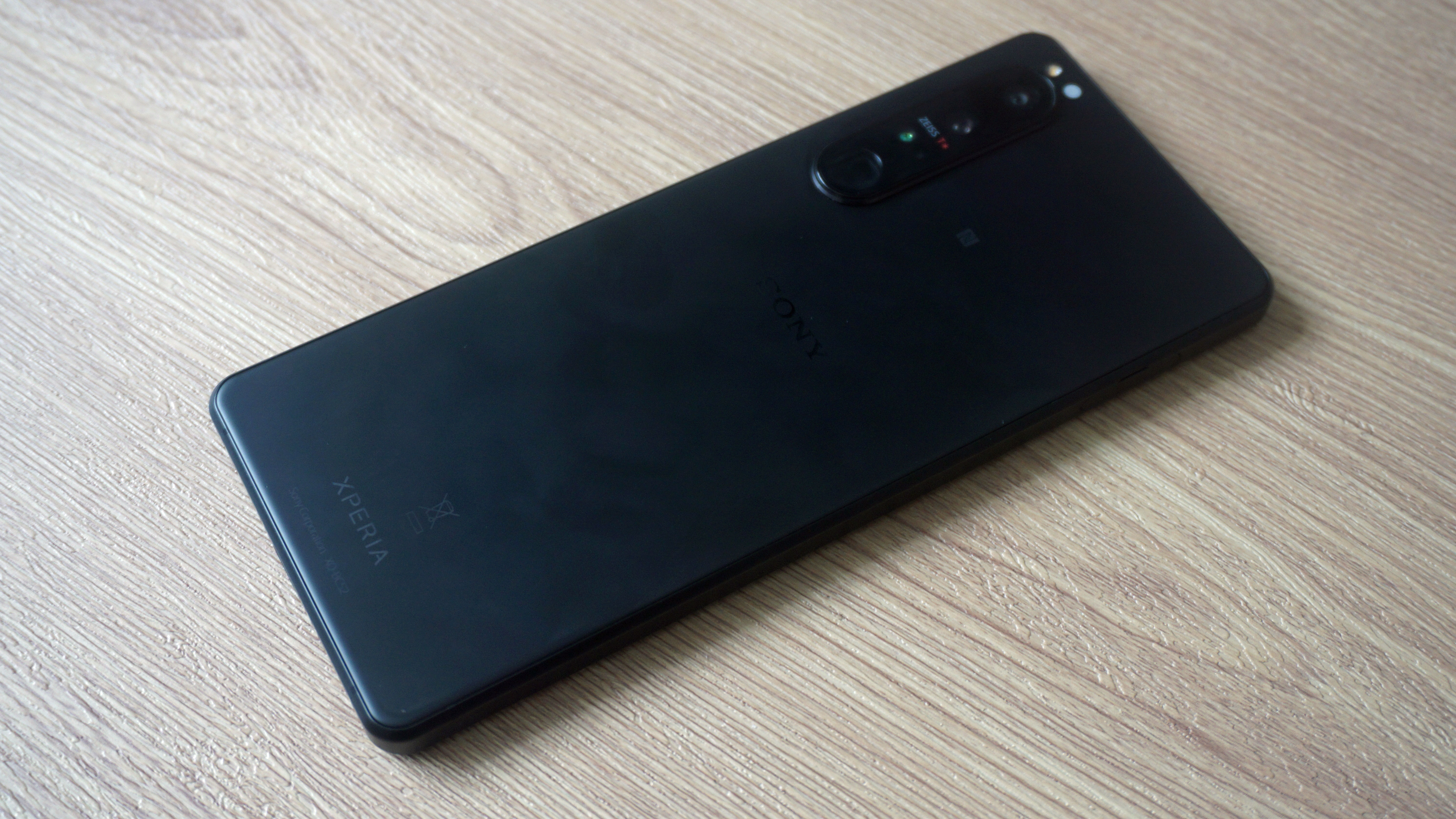
This does mean that the Xperia 1 III has a bit of a forehead, but it’s far from huge, and it’s balanced out by an identically proportioned chin. This also enables the provision of front-firing stereo speakers, while the Samsung has one that’s downward-firing. Add in a 3.5mm headphone jack, and the Sony has the more complete audio showing of the two.
We also approve of Sony’s decision to ditch shininess and embrace a frosted glass finish to the rear panel. In that way, at least, these two phones are on the same page, as the Galaxy S21 Ultra also looks great in stealthy matte black.
There’s a bit of a jumble of buttons on the right-hand edge of the Xperia, with dedicated shutter and Google Assistant buttons joining an enlarged power button and a volume rocker. Going back to that power button, it contains a speedy fingerprint sensor when most flagship rivals (Samsung included) go the in-display route. Samsung’s ultrasonic system is much improved over previous years though, so it really comes down to personal preference.
The Sony is a very tall phone too, courtesy of an unusual 21:9 screen aspect ratio and those extended top and bottom bezels. It measures 165 x 71mm, which means that it’s almost exactly as tall as the 165.1 x 75.6mm Galaxy S21 Ultra, but considerably narrower.
Sony’s phone is a little thinner than Samsung’s too at 8.2mm versus 8.9mm. It’s also lighter by far at 186g, or a gram more for the US mmWave variant. The Samsung Galaxy S21 Ultra is a relatively hefty beast at 228g.
The Samsung Galaxy S21 Ultra is the bigger device, then, but it wears its size well. It uses its curves to soften its bulk, and it’s a truly beautiful piece of kit from any angle. In particular, the phone’s swooping camera module design makes a feature out of a logistical problem.
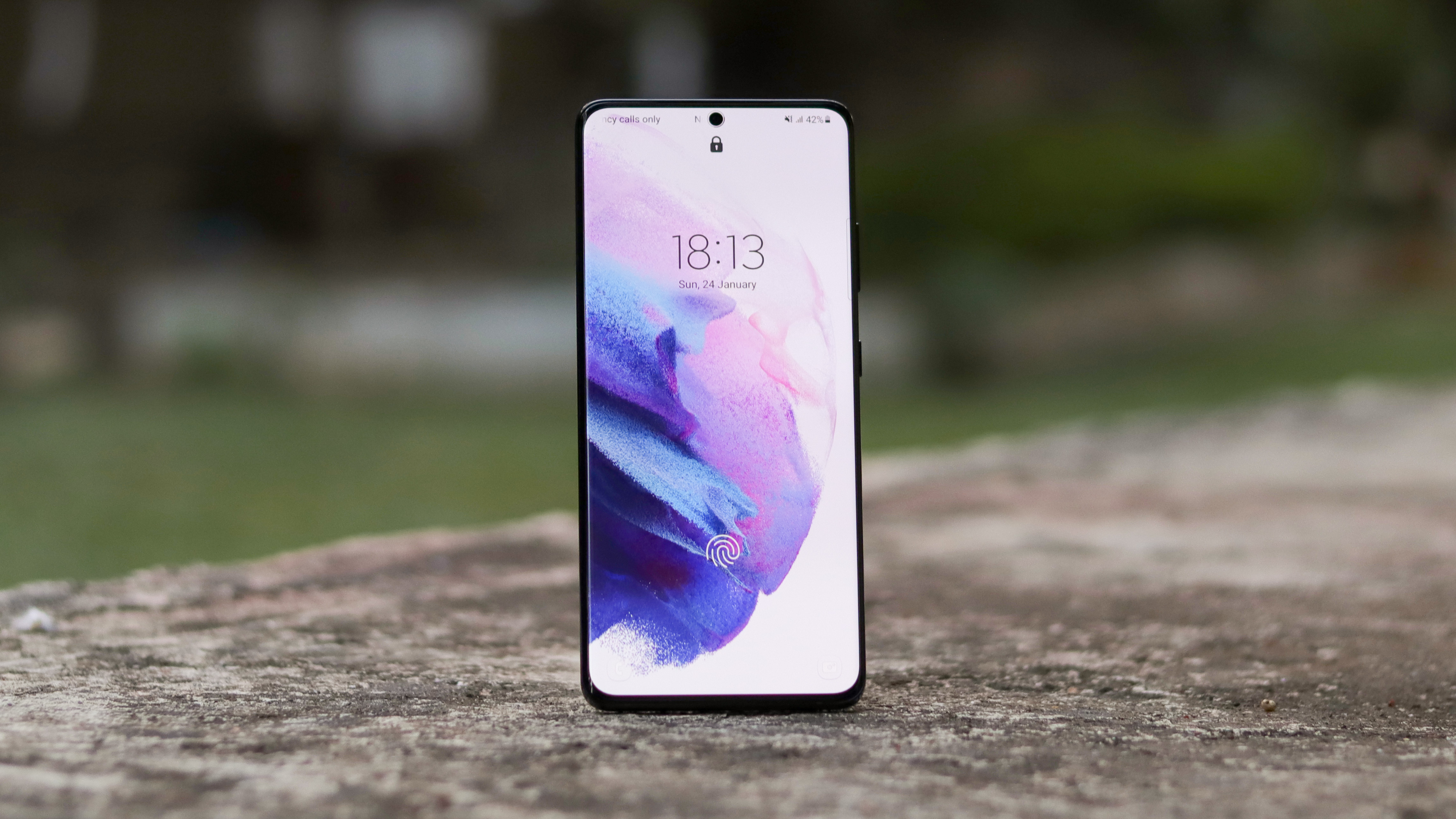
The Samsung phone is a little tougher in certain ways too. While the Sony only has super-tough Gorilla Glass Victus on the front of the device, and weaker Gorilla Glass 6 to the back, the Galaxy S21 Ultra has Victus front and back.
Conversely, Sony’s phone has a more comprehensive IP65/IP68 dust and water resistance rating compared to the IP68-certified Samsung. This means that the Xperia 1 III can withstand jets of water as well as full immersion.
Display
There’s an awful lot to unpack with these two OLED displays. Once again, Samsung and Sony have chosen to do things very differently to one another.
Samsung’s approach is the more straightforward and cohesive and, we’d venture, the better of the two for most people. It’s bigger at 6.8-inches (6.5-inches for the Sony), and it gets brighter to the tune of 1500 nits. Sony hasn’t supplied figures for its own display, which speaks to a dimmer panel.
The Sony Xperia 1 III hits back with a 4K resolution, which amounts to 3840 x 1644 pixels. Samsung’s bigger display can ‘only’ hit QHD (3200 x 1440) by comparison.
Still, it’s quite tricky to spot the difference in resolution here - certainly not to the same extent that you can from FHD to QHD. And what’s more, the Galaxy S21 Ultra implements QHD without compromise.
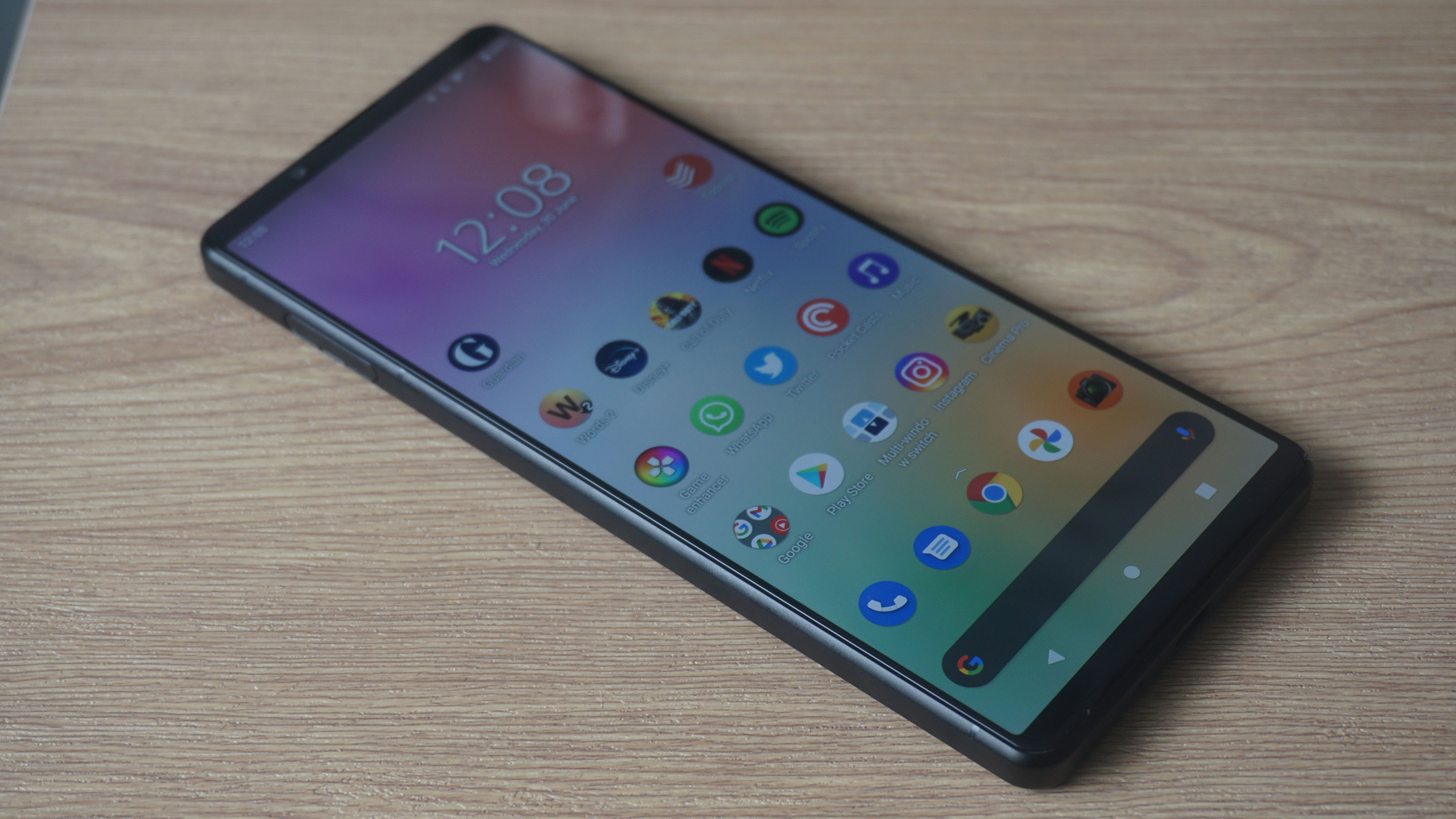
While the Sony runs beautifully at 4K, it can’t do so whilst maintaining its 120Hz refresh rate. Whenever 4K is employed, the screen drops to 60Hz. The Galaxy S21 Ultra, meanwhile, can maintain QHD and 120Hz simultaneously.
As we’ve already mentioned, the Sony has a super-wide 21:9 aspect ratio. The Samsung goes with 20:9, like most other phones. Together with the Xperia 1 III’s lack of a notch, it makes Sony’s phone a better device for watching native widescreen movie content on, as well as lending certain games an extra cinematic edge.
For everyday use, however, we’d probably hand the Galaxy S21 Ultra the victory. It’s simply better optimized and more consistent with its output on a day-to-day and task-by-task basis.
Camera
Would it surprise you to learn that Samsung and Sony have very different ideas about what constitutes a premium smartphone camera experience? Hopefully not, if you’ve been paying attention.
Sony’s approach is all about speed and control. For speed, the Xperia 1 III employs a relatively low pixel count (it’s a 12MP main sensor) and expertise from its formidable Alpha camera department to create the fastest, most advanced dual-pixel autofocus system available on any smartphone. It’ll reel off shots like a machine gun, and will lock onto the eyes of a hyperactive puppy or child without issue.
For control, Sony gives you the most hands-on and pro-level camera app we’ve seen outside of third-party offerings. While it defaults to a Basic point-and-shoot mode, you’re positively encouraged to go hands-on with focus, ISO, shutter speed, and other such settings. You also get that dedicated two-stage shutter button, which really elevates the experience.
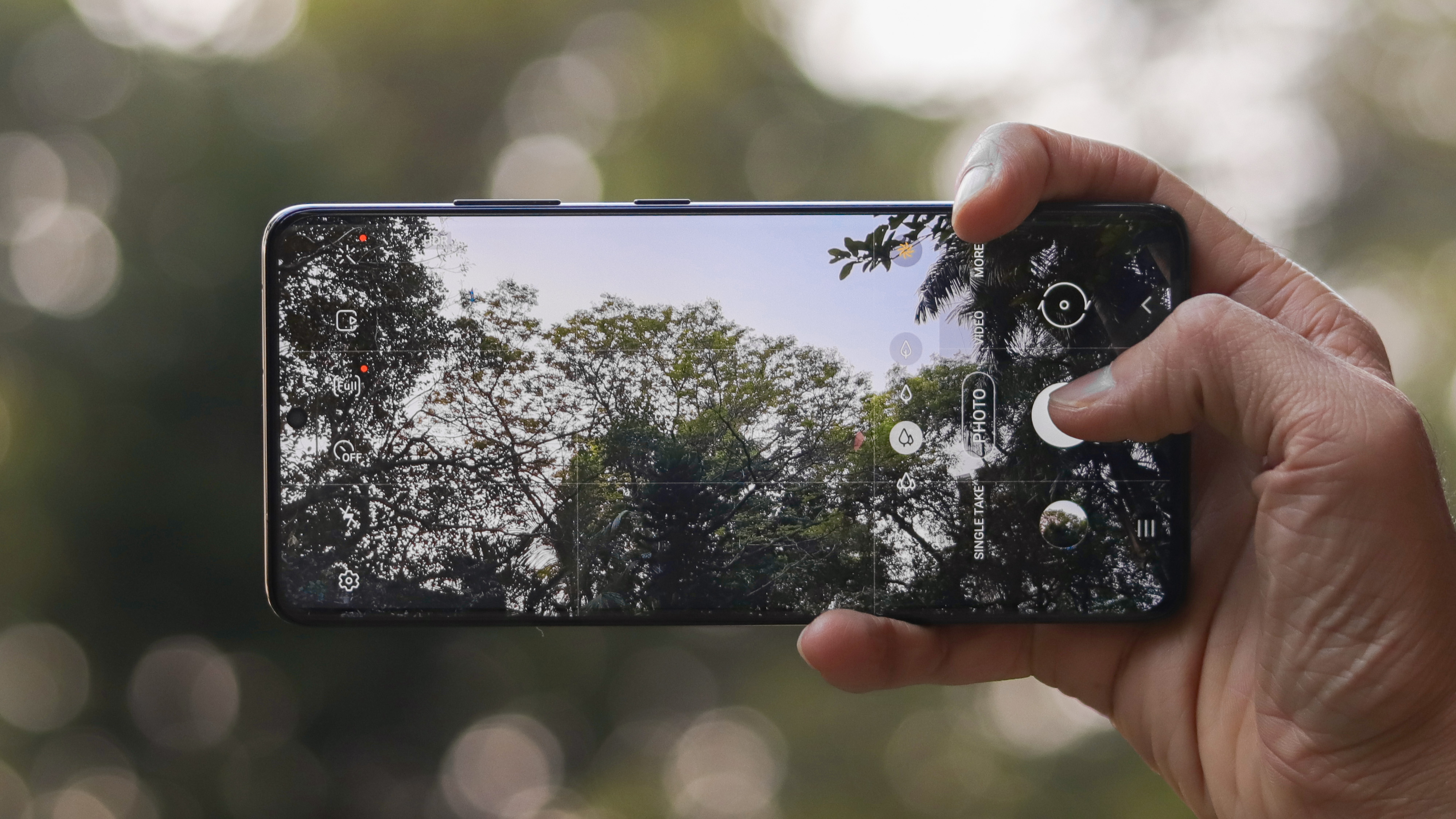
There’s also a new and innovative dual-lens telephoto camera, which will flick between an f/2.3 3x and an f/2.8 4.4x lens at the press of a button. Like we said, speed and control.
For Samsung, it’s all about making each photo you take with the Galaxy S21 Ultra the kind of bright, vibrant, clear shot you’ll want to share with others - no matter how challenging the lighting or far off the subject. To that end, it gives you a huge 1/1.33" 108MP wide sensor, which employs a 9-in–1 pixel binning technique to produce crisp, clear, supremely exposed shots in bright or dark conditions.
Rather than two lenses, Samsung gives you two separate telephoto cameras - one a 10MP f/2.4 3x and one a 10MP f/4.9 10x. They’ll combine with that 108MP main sensor to create 100x hybrid zoom shots, though the mark of its true effectiveness is the potential for decent 20x shots.
The two phones pack similarly-sized 12MP ultra-wide sensors with f/2.2 apertures.
On the video front, both phones have their strengths. Only the Galaxy S21 Ultra can manage 8K footage at 30fps, while only the Xperia 1 III can hit 4K at 120fps. The latter is potentially more useful, opening up the possibility of beautifully crisp slo-mo footage.
We’d give Samsung the win for its 40MP front camera, which yields sharper and better-balanced selfies than the Sony’s 8MP equivalent.
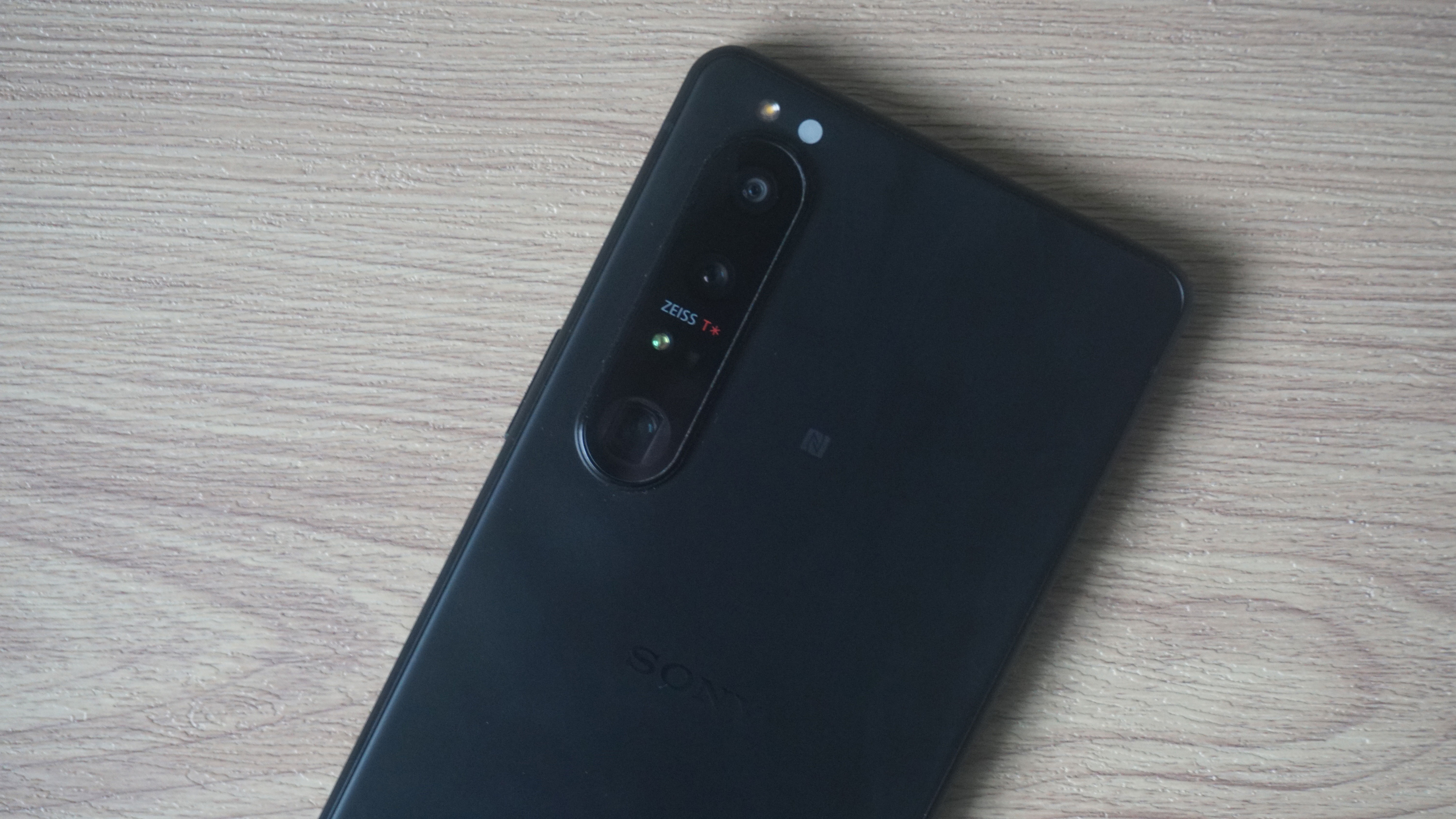
So which camera system is better overall? For general fire-and-forget point and shooting, the Samsung wins out. It simply works harder and smarter to produce great-looking shots than the Sony, which requires you to carefully consider your shot composition if you really want to get the very best out of it.
Some will prefer Sony’s more neutral and natural color science to Samsung’s occasionally gaudy hyper-reality. But most people want to post to Instagram with their phones, not enter a photography competition.
Specs and performance
The one point of similarity here is the way in which these two phones are powered. Or at least, that’s the case if you’re based in the US or China.
In those countries, both phones will give you a Snapdragon 888 CPU and 12GB of RAM. Outside of those countries, only Sony sticks with that spec. The Galaxy S21 Ultra swaps out the Qualcomm chip in favor of Samsung’s own Exynos 2100.
This point alone hands the win to the Sony - but only by a fraction. Samsung’s latest chip has closed the gap on its Qualcomm equivalent by some margin, but it’s still not quite as fast.
Both the CPU and GPU-based benchmark tests tend to favor the Sony Xperia 1 III. Again, though, the gap really isn’t huge. When it comes down to high-end 3D games like Genshin Impact and CoD Mobile, you’re unlikely to pick up on the difference.
In terms of storage options, both phones exist in both 256GB and 512GB iterations, depending on your region. But only the Samsung also offers a lower 128GB option. On the other hand, the Xperia 1 III gives you a microSDXC slot for expansion purposes, which is potentially a much bigger deal.
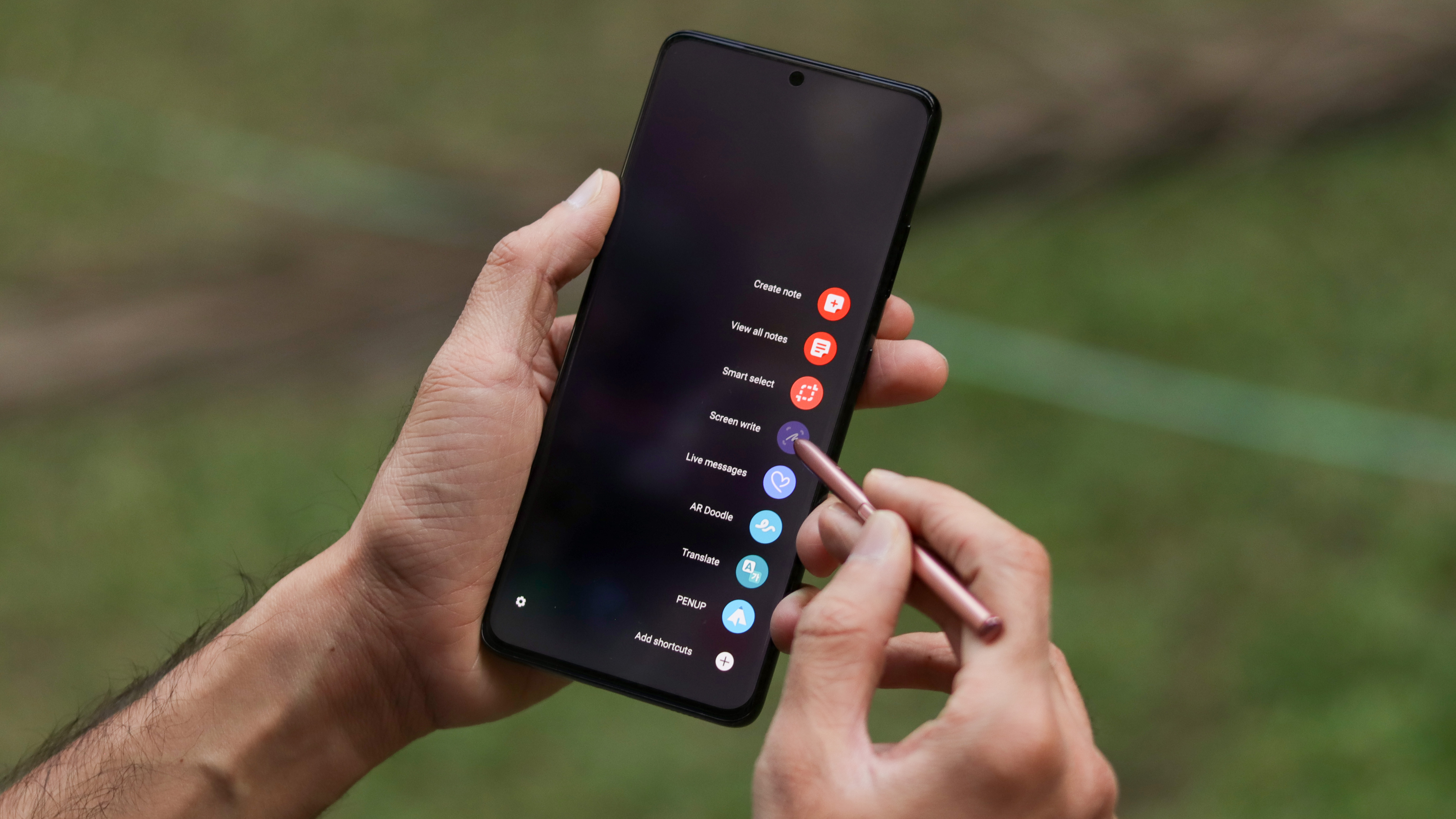
As with so much of this face-off, the question of who offers the best software is likely to divide people. Sony goes with an extremely clean take on Android that retains much of Google’s original layout. It adds a handful of Sony apps and a neat split-screen function for capitalizing on that long display, but otherwise it’s quite a light skin.
Samsung, by contrast, is a little more hands-on with its software modifications. One UI isn’t as in-your-face as it used to be, but there are still lots of customization options, third party applications, modified menus, and revamped UI elements on display.
It’s worth mentioning that the Samsung Galaxy S21 Ultra adds supports for Samsung’s S Pen stylus. It’s not as well integrated as the Note series - there are no Bluetooth shortcuts for example - but it’s there if want to switch to a note-taking tool at any point.
Battery life
The main reason for the Samsung Galaxy S21 Ultra being so much bigger than the Sony Xperia 1 III is that it has a much bigger battery. We’re talking 5000 mAh for the Samsung and 4500 mAh for the Sony.
While the Xperia 1 III sports that 4K display, though, it doesn’t run that simultaneously with a 120Hz refresh rate. The Galaxy S21 Ultra, on the other hand, outputs at QHD and 120Hz all at once. Add in the fact that it’s bigger and brighter, and it could just be the more power-hungry component when running flat out.
Interestingly enough, the Sony defaults to 4K/60fps, while the Samsung defaults to FHD/120fps.
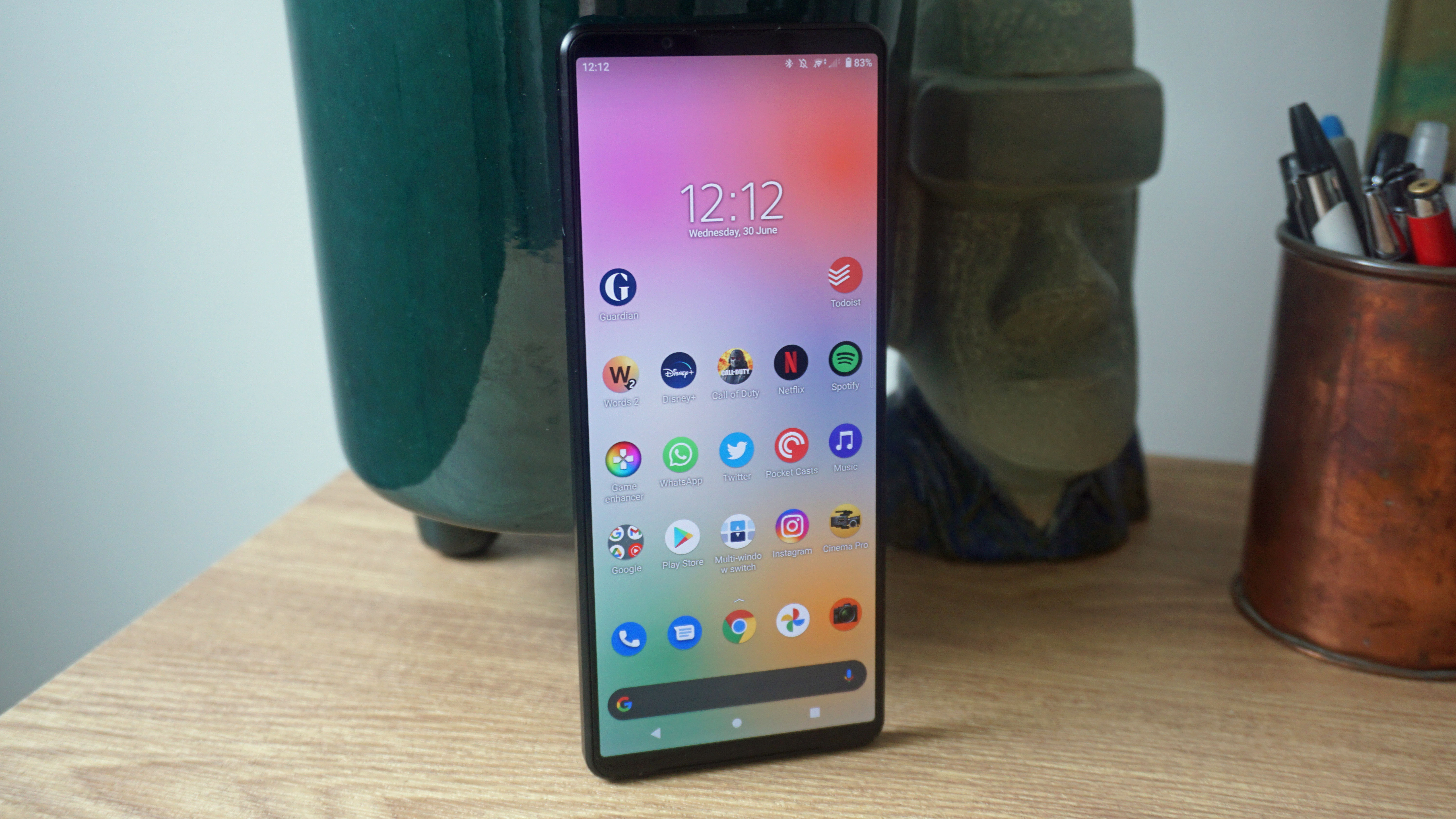
Both phones will get you through a full day of usage with all settings maxed out, but only just. We found that the Xperia 1 III would tend to have around 10% left at the end of a long day of moderate usage.
The Samsung Galaxy S21 Ultra would comfortably get through a full day in FHD/120Hz conditions, but would tend to make us sweat when set to QHD/120Hz.
One particular mark in the Sony’s favor is that it bundles the Xperia 1 III with a 30W charger. Samsung only supports 25W charging, and it doesn’t give you that power brick in the box.
Both phones will support wireless and reverse charging.
Takeaway
You really have to have a long hard think before you part with $1,300 / £1,200 / AU$1,800 for a smartphone. So while you’re making that calculation, make sure you factor in precisely what you want from your ideal smartphone.
Do you want an all-around champ with a huge, super-bright display? Do you want your camera to take effortlessly bright, sharp shots, and with uncanny zoom capabilities? The Samsung Galaxy S21 Ultra would like to say hi.
Or are you someone who likes to watch movies on the go in as close to cinematic fidelity as possible? Do you insist on carefully composing your mobile photos, except when the situation demands the fastest and most reliable autofocus possible? Boy, does the Xperia 1 III have an offer for you.
As an all-around package, the Samsung Galaxy S21 Ultra has the edge here. It’s a little more polished and refined, with broader appeal and a slightly more inviting set-up. These are two brilliant enthusiast phones, but Samsung keeps the door just a little more open for everyone else.